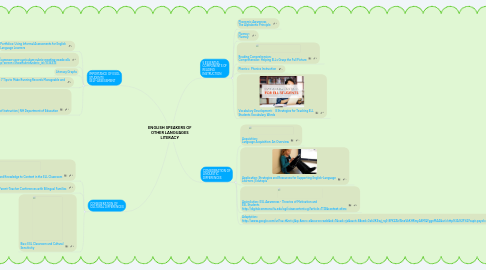ENGLISH SPEAKERS OF OTHER LANGUAGES LITERACY
by Alison Weinstein Rice

1. IMPORTANCE OF ESOL STUDENTS SELF-ASSESSMENT
1.1. Portfolios: Using Informal Assessments for English Language Learners
1.2. Rubrics: http://www.colorincolorado.org/blog/common-core-curriculum-rubric-meeting-needs-ells http://rubistar.4teachers.org/index.php?screen=ShowRubric&rubric_id=1034333
1.3. Literacy Graphs
1.4. Running Records: 7 Tips to Make Running Records Manageable and Useful | Edutopia
1.5. Checklists: New Hampshire English Language Proficiency Standards | Bureau of Integrated Programs | Division of Instruction | NH Department of Education
2. CONSIDERATION OF CULTURAL DIFFERENCES
2.1. Background Knowledge: Connect Students' Background Knowledge to Content in the ELL Classroom
2.2. Student/Parent Interviews:Tips for Successful Parent-Teacher Conferences with Bilingual Families
2.3. Bias: ESL Classroom and Cultural Sensitivity
3. 5 ESSENTIAL COMPONENTS OF READING INSTRUCTION
3.1. Phonemic Awareness The Alphabetic Principle
3.2. Fluency: Fluency
3.3. Reading Comprehension: Comprehension: Helping ELLs Grasp the Full Picture
3.4. Phonics: Phonics Instruction
3.5. Vocabulary Development: 8 Strategies for Teaching ELL Students Vocabulary Words
4. CONSIDERATION OF LINGUISTIC DIFFERENCES
4.1. Acquisition: Language Acquisition: An Overview
4.2. Application: Strategies and Resources for Supporting English-Language Learners | Edutopia
4.3. Assimilation: ESL Awareness - Theories of Motivation and ESL Students http://digitalcommons.fiu.edu/cgi/viewcontent.cgi?article=1112&context=sferc
4.4. Adaptation: http://www.google.com/url?sa=t&rct=j&q=&esrc=s&source=web&cd=1&cad=rja&uact=8&ved=0ahUKEwj_rq3-8PXZAhWnxVkKHRmyA8MQFggnMAA&url=http%3A%2F%2Fsapir.psych.wisc.edu%2Fpapers%2Flupyan_dale_2016.pdf&usg=AOvVaw2aItPcSh4M56Kmjw-buuxr


